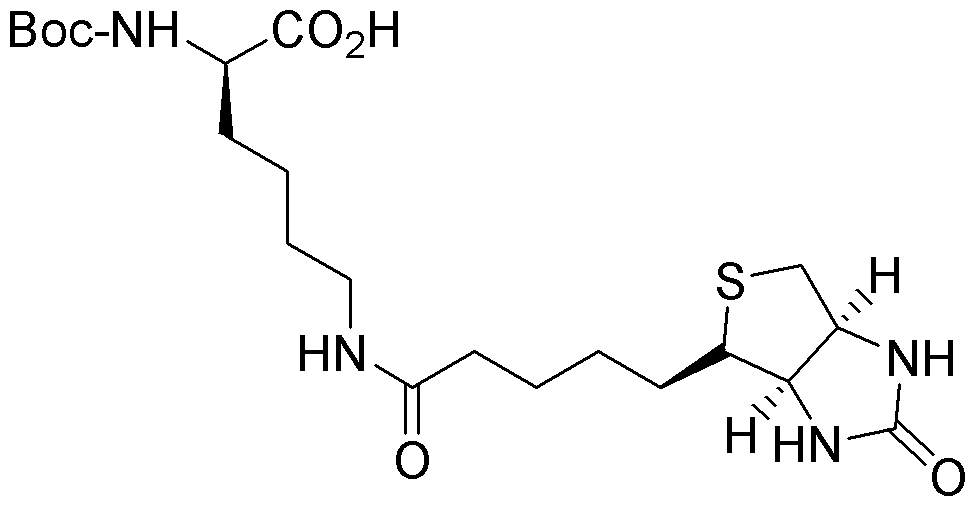Na-Boc-Ne-biotinyl-D-lysine is widely utilized in research focused on:
- Bioconjugation: This compound is essential for attaching biotin to proteins or peptides, enhancing their detection and purification in various biochemical assays.
- Drug Development: It plays a significant role in the development of targeted drug delivery systems, allowing researchers to create more effective therapies by directing drugs to specific cells.
- Diagnostics: Used in the formulation of diagnostic kits, it aids in the identification of biomolecules, improving the accuracy of tests in clinical settings.
- Protein Labeling: The compound facilitates the labeling of proteins for imaging studies, which is crucial in understanding protein interactions and functions in cellular environments.
- Research in Cell Biology: It supports studies in cell signaling and metabolism by enabling the tracking of biotinylated molecules within living cells, providing insights into cellular processes.
General Information
Properties
Safety and Regulations
Applications
Na-Boc-Ne-biotinyl-D-lysine is widely utilized in research focused on:
- Bioconjugation: This compound is essential for attaching biotin to proteins or peptides, enhancing their detection and purification in various biochemical assays.
- Drug Development: It plays a significant role in the development of targeted drug delivery systems, allowing researchers to create more effective therapies by directing drugs to specific cells.
- Diagnostics: Used in the formulation of diagnostic kits, it aids in the identification of biomolecules, improving the accuracy of tests in clinical settings.
- Protein Labeling: The compound facilitates the labeling of proteins for imaging studies, which is crucial in understanding protein interactions and functions in cellular environments.
- Research in Cell Biology: It supports studies in cell signaling and metabolism by enabling the tracking of biotinylated molecules within living cells, providing insights into cellular processes.
Documents
Safety Data Sheets (SDS)
The SDS provides comprehensive safety information on handling, storage, and disposal of the product.
Product Specification (PS)
The PS provides a comprehensive breakdown of the product’s properties, including chemical composition, physical state, purity, and storage requirements. It also details acceptable quality ranges and the product's intended applications.
Certificates of Analysis (COA)
Search for Certificates of Analysis (COA) by entering the products Lot Number. Lot and Batch Numbers can be found on a product’s label following the words ‘Lot’ or ‘Batch’.
*Catalog Number
*Lot Number
Certificates Of Origin (COO)
This COO confirms the country where the product was manufactured, and also details the materials and components used in it and whether it is derived from natural, synthetic, or other specific sources. This certificate may be required for customs, trade, and regulatory compliance.
*Catalog Number
*Lot Number
Safety Data Sheets (SDS)
The SDS provides comprehensive safety information on handling, storage, and disposal of the product.
DownloadProduct Specification (PS)
The PS provides a comprehensive breakdown of the product’s properties, including chemical composition, physical state, purity, and storage requirements. It also details acceptable quality ranges and the product's intended applications.
DownloadCertificates of Analysis (COA)
Search for Certificates of Analysis (COA) by entering the products Lot Number. Lot and Batch Numbers can be found on a product’s label following the words ‘Lot’ or ‘Batch’.
*Catalog Number
*Lot Number
Certificates Of Origin (COO)
This COO confirms the country where the product was manufactured, and also details the materials and components used in it and whether it is derived from natural, synthetic, or other specific sources. This certificate may be required for customs, trade, and regulatory compliance.


